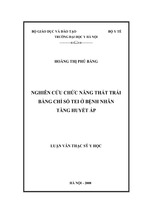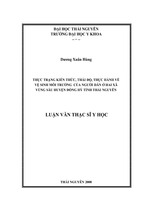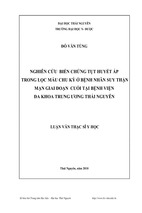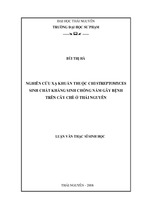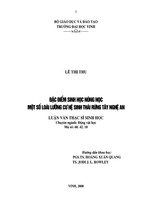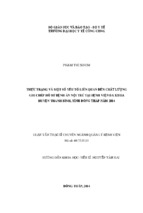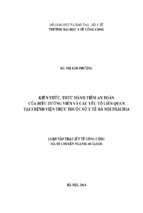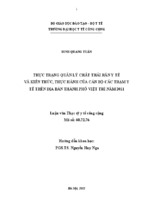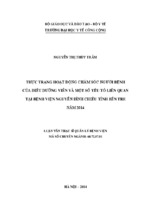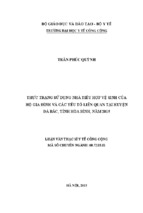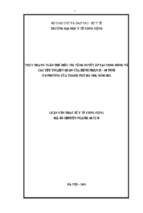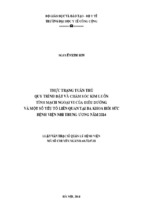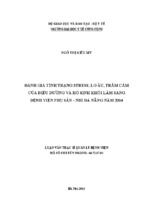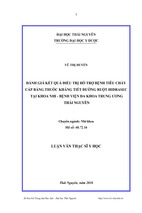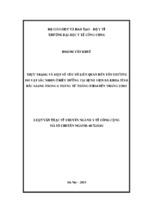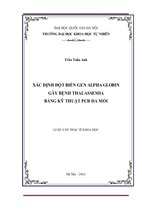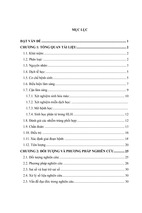Prejudicial related-party transactions of listed companies in
China: evidence of motivating and enabling influences
A thesis submitted
in fulfilment of the requirement for the degree of
Doctor of Philosophy
Maggie Pan Williams
Bachelor of Business
Master of Accountancy
Master of Business Administration
Certified Practice Accountant (CPA)
School of Accounting
College of Business
RMIT University
February 2014
DECLARATION
I certify that except where due acknowledgement has been made, the work is that of the
author alone; the work has not been submitted previously, in whole or in part, to qualify
for any other academic award; the content of the thesis is the result of work which has
been carried out since the official commencement date of the approved research
program; any editorial work, paid or unpaid, carried out by a third party is
acknowledged; and, ethics procedures and guidelines have been followed.
Maggie Pan Williams
February 2014
ii
ACKNOWLEDGEMENTS
This thesis represents the culmination of much work and is a milestone in my life. I
would like to acknowledge my supervisor, Professor Dennis Taylor, who inspired me
and guided me through the tough times with his enthusiasm and knowledge. I also
acknowledge my second supervisor, Professor Brendon O’Connell, for his insights.
Both added to my PhD experience and rendered it both productive and stimulating. I
am thankful for the excellent example Professor Taylor set, to the extent that he is a role
model for me.
I wish to extend my sincere thanks to RMIT University for the opportunities given to
attend conferences and collect relevant data from overseas. I would especially like to
extend my appreciation to the Hong Kong Baptist University for its assistance in this
process. Importantly, I am thankful for the support provided by my parents, Richard
and Pauline.
They have instilled in me the extraordinary value of the pursuit of
knowledge.
Above all, I have been sustained by the constant patience and
encouragement provided by my husband, Gerald and son, Vincent.
iii
TABLE OF CONTENTS
DECLARATION .............................................................................................................ii
ACKNOWLEDGEMENTS .......................................................................................... iii
TABLE OF CONTENTS ............................................................................................... iv
LIST OF TABLES ....................................................................................................... viii
LIST OF FIGURES ....................................................................................................... ix
LIST OF ACRONYMS ................................................................................................... x
ABSTRACT........ ...........................................................................................................xii
CHAPTER 1.
INTRODUCTION ............................................................................. 1
1.1.
Preamble ............................................................................................................... 1
1.2.
Objectives of the Study ........................................................................................ 3
1.3.
Motivation ............................................................................................................. 4
1.4.
Theoretical Framework of the Study ................................................................. 6
1.5.
Scope of the Research .......................................................................................... 9
1.6.
Thesis Organisation ............................................................................................. 9
CHAPTER 2.
BACKGROUND TO THE STUDY ............................................... 11
2.1.
Introduction ........................................................................................................ 11
2.2.
Brief History of the Development of China’s Economic and Accounting
Systems ........................................................................................................................... 11
2.2.1. From centrally-planned to market-oriented economic and accounting systems in
China……………… ....................................................................................................... 11
2.2.2. Accounting and corporate regulatory reforms in China’s transitional economy 14
2.2.3. Disclosure requirements for related-party transactions ....................................... 19
2.3.
Securities Markets in China and their Regulations ........................................ 23
2.3.1. A brief history of China’s securities markets ...................................................... 23
2.3.2. Classification of shares........................................................................................ 26
iv
2.3.3. The split share reform ......................................................................................... 28
2.3.4. Establishment of a code of corporate governance in China ................................ 33
2.3.5. Other board-related regulations ........................................................................... 34
2.3.6. Minority shareholder protection in China ........................................................... 37
2.3.7. Key issues of China’s corporate governance....................................................... 39
2.4.
Summary ............................................................................................................. 41
CHAPTER 3.
LITERATURE REVIEW................................................................ 43
3.1.
Introduction ........................................................................................................ 43
3.2.
Corporate Governance ...................................................................................... 44
3.2.1. The nature of corporate governance and its diffusion ......................................... 44
3.2.2. The governance problem for developing countries ............................................. 49
3.2.3. Agency theory and ownership structure .............................................................. 52
3.2.4. Board characteristics in China............................................................................. 60
3.2.5. Issues for the governance system in China ......................................................... 62
3.3.
Related-Party Transactions and Evidence of Tunneling and Propping ........ 63
3.3.1. Minority shareholders and controlling shareholders ........................................... 63
3.3.2. Definitions and measures of related-party transactions ...................................... 65
3.3.3. Classifications of Tunneling and propping phenomena ...................................... 66
3.3.4. Empirical studies on Tunneling and propping..................................................... 69
3.4.
Theories Applicable to Factors Driving Tunneling and Propping ................. 77
3.4.1. Rent protection theory ......................................................................................... 77
3.4.2. Theory of the market for corporate control ......................................................... 81
3.4.3. Market transition theory ...................................................................................... 83
3.5.
Summary ............................................................................................................. 86
CHAPTER 4.
HYPOTHESES DEVELOPMENT ................................................ 88
4.1.
Introduction ........................................................................................................ 88
4.2.
Motivations for Prejudicial Related-Party Transactions................................ 89
v
4.2.1. Motivation for Tunneling – rent-protection theory of ownership control ........... 89
4.2.2. Motivation for propping – theory of market for ownership control .................... 91
4.3.
Dependence and Independence in Governance Structures in China ............ 93
4.4.
Cadre Entrepreneurs and ‘Path Dependent’ Management – Market
Transition Theory .......................................................................................................... 95
4.5.
The Influence of Non-Controlling Blockholders ............................................. 98
4.6.
Summary ............................................................................................................. 99
CHAPTER 5.
RESEARCH DESIGN AND METHOD ...................................... 101
5.1.
Introduction ...................................................................................................... 101
5.2.
Conceptual Framework ................................................................................... 101
5.3.
Specification of Models and Definitions of Variables ................................... 104
5.4.
Use of quantitative Methods and Secondary Data ........................................ 108
5.5.
Data Source ....................................................................................................... 110
5.6.
Sampling ........................................................................................................... 111
5.7.
Scope of Equity Capital of Companies Considered in the Sample .............. 113
5.8.
Data Checking, Dealing with Missing Data and Normalisation .................. 115
5.9.
Method of Analysis ........................................................................................... 122
5.10.
Summary ....................................................................................................... 123
CHAPTER 6.
RESULTS AND DISCUSSION ..................................................... 125
6.1.
Introduction ...................................................................................................... 125
6.2.
Descriptive Statistics of Sampled Companies ................................................ 125
6.3.
Correlation Analysis......................................................................................... 135
6.3.1. Correlations between dependent variables ........................................................ 135
6.3.2. Correlations between dependent and independent variables............................. 136
6.3.3. Correlations between independent variables ..................................................... 140
6.4.
Regression Results for Determinants of Prejudicial RPTs ........................... 144
6.4.1. Whole of sample results - Tunneling, propping and combined models ............ 144
vi
6.4.2. Split sample results for larger versus smaller companies (Table 6.11) ............. 154
6.4.3. Additional analyses for sensitivity of measures of the dependent variable ...... 158
6.5.
Summary ........................................................................................................... 161
CHAPTER 7.
CONCLUSIONS ............................................................................ 163
7.1.
Introduction ...................................................................................................... 163
7.2.
Summary of findings ........................................................................................ 164
7.3.
Implications ...................................................................................................... 169
7.4.
Limitations ........................................................................................................ 170
7.5.
Future Research Directions ............................................................................. 171
REFERENCE
173
APPENDICE LIST ..................................................................................................... 190
Appendix 1: Extracts from the Code of Corporate Governance for Listed
Companies in China ............................................................................................ 191
Appendix 2: Accounting Law of the People's Republic of China ........................... 198
Appendix 3: Definitions and Methods of Computing Ultimate Controlling
Shareholder, Control Rights and Ownership Rights, as Given in the CSMAR
Database…… ....................................................................................................... 212
vii
LIST OF TABLES
Table 2.1. Accounting Regulations to Attract Foreign Business and Investment
15
Table 2.2. Extracts of Provisions in Accounting Standard for Enterprises (ASBE) No.
36 – Related Party Disclosures (2006)
21
Table 2.3. Characteristics of Corporate Governance Models
32
Table 3.1. Summary of Theories for Corporate Governance Development
46
Table 3.2. Summary of Empirical Studies on the Effects of Ownership Structure on
Firm Performance
55
Table 3.3. Classification of RPTs into Tunneling and Propping Transactions.
68
Table 5.1. Capital Structure of Sampled Companies
114
Table 6.1. Descriptive Statistics of Variables and Dichotomous Variables
127
Table 6.2. Frequencies of Companies in Industry Types
130
Table 6.3. Comparison of Means between State and Non-State Controlled Companies
132
Table 6.4. Comparison of Mean between Larger and Smaller Companies
134
Table 6.5. Pearson Correlation Coefficients for Dependent Variables
135
Table 6.6. Pearson Correlations between Independent and Dependent Variables
139
Table 6.7. Pearson Correlations between All Independent Variables.
141
Table 6.8. Collinearity Diagnostics Test for the Independent Variables Based on the
TOTRPT Model
143
Table 6.9. Summary of Results – Whole Sample
148
Table 6.10. Regression Results – State and Non State-Based Controlling Shareholders
Samples
152
Table 6.11. Regression Results – Larger and Smaller Listed Companies Samples
156
Table 7.1. Summary of Results of Hypotheses Testing – Results from Table 6.9 (whole
sample) and Table 6.10 and 6.11 (sub-samples)
viii
166
LIST OF FIGURES
Figure 1.1. Theoretical Framework for the Principal-Principal Conflict Issue................. 8
Figure 2.1. Regulatory Framework for Accounting in China ......................................... 16
Figure 3.1. Main Theories Influencing the Development of Corporate Governance ..... 47
Figure 5.1. Conceptual Framework ............................................................................... 103
Figure 5.2. Scatterplot of Dependent Variable: TOTALRPT ...................................... 117
Figure 5.3. Normal P-P Plot of Regression Standardized Residual for TOTALRPT
model ............................................................................................................................. 118
Figure 5.4. Histogram of Residuals TOTALRPT (transformed by its natural logarithm)
Model ............................................................................................................................ 119
Figure 5.5. Histogram of the Variable, TOTALRPT, for Whole Sample ..................... 120
Figure 5.6. Histograms of TOTALRPT for Split Sample by Company Size and
Controlling Ownership Type ........................................................................................ 121
ix
LIST OF ACRONYMS
ASBE
Accounting Standard for Business Enterprises
CASs
Chinese Accounting Standards
CEO
Chief Executive Officer
CICPA
Chinese Institute of Certified Public Accountants
CITIC
China International and Investment Corporation
CNY
Chinese Yuan
CPC
Communist Party of China
CSMAR
China Securities Market and Accounting Research
CSRC
Chinese Securities and Regulatory Commission
GAAP
Generally Accepted Accounting Principles
GFC
Global Financial Crisis
IFRSs
International Financial Reporting Standards
IPO
Initial public offering
LGFVs
Local government financing vehicles
MOF
Ministry of Finance
MOSOEs
Market-oriented State-owned Enterprises
OECD
Organization for Economic Cooperation and Development
OLS
Ordinary Least squares
PBOC
People’s Bank of China
PRC
People’s Republic of China
RMB
Renminbi (The official currency of China)
RPTs
Related-Party Transactions
RSS
Residual Sum of Squares
SETC
State Economic and Trade Commission
SHSE
Shenzhen Stock Exchange
x
NUS
National University of Singapore Business School
SOEs
State-owned Enterprises
SZSE
Shanghai Stock Exchange
The Code
The Code of Corporate Governance for Listed Companies in China
VIF
Variable Inflation Factor
WTO
World Trade Organisation
xi
ABSTRACT
There is emerging corporate governance research on the problem of conflict of interest
between shareholders (i.e., the principal-principal problem). This problem concerns the
phenomenon of the ultimate controlling shareholder expropriating (Tunneling) or
injecting (propping) funds through related-party transactions (RPTs) in a way that
prejudices the rights of minority shareholders. The area of corporate governance that
deals with minority shareholder protection is under-researched. Most corporate
governance research treats shareholders as a homogeneous party (i.e., the principal)
whose common rights are to be served by the agent (management and the board).
However, the protection of minority shareholders’ interests, in balance with all
shareholders of the firm, is one of the key corporate governance principles. Ways in
which this study seeks to contribute to the literature concerning the principal-principal
problem are threefold: (a) extend the evidence and understanding of governance
problems in the context of developing and transitioning countries where the protection
of minority shareholders from prejudicial actions by an ultimate controlling shareholder
or set of block-holders and the executive management team has been identified as the
primary problem (Shleifer and Vishny 1997; Johnson, Lopez-de-silanes, La Porta and
Shleifer 2000); (b) develop stronger theoretical underpinning for the specification of
models when empirically investigating relationships between corporate governance
practices, ownership concentration, regulatory systems and the actions of controlling
shareholders in developing and transitioning countries; and (c) establish improved
measures used as proxies for the prejudicial proportion of total RPTs and for theorydriven concepts that can explain the extent of Tunneling and propping phenomena as
manifest in prejudicial RPTs.
The main aim of this study, therefore, is to test theory-driven models of motivating and
enabling influences on the extent of prejudicial RPTs. A supplementary aim is to update
the descriptive evidence on the incidence and categorisation of RPTs in China. In
respect of the main aim, the following lines of investigation are pursued: (a) the ultimate
controlling shareholder’s motivation for undertaking Tunneling from the perspective of
Bebchuk’s (1999) rent-protection theory of corporate ownership structure; (b) the
ultimate controlling shareholder’s motivation for undertaking propping from the
xii
perspective of Jensen and Ruback’s (1983) ‘market for ownership control’ theory; and
(c) the enabling influences of corporate governance practices on Tunneling and
propping in a transitional economy with high government ownership from the
perspectives of reverse bonding theory between controlling shareholders and agents,
and the theory of markets in transition (Nee 1989) where power and privilege is
perpetuated into the private sector from former State regimes.
This study is set in the context of contemporary China. A background review is
provided to the context of corporations, shareholders and capital markets in China. This
includes a brief history of economic and accounting changes, the development of
securities markets and shares classifications, and the establishment of a corporate
governance code including aspect of minority shareholders protection in China.
Hypotheses and models are constructed to test the extent to which motivating and
enabling/inhibiting factors can explain or predict the extent of Tunneling and propping,
respectively. A positivist epistemology is adopted. China is chosen as the context
because it is a major transitional economy, has a large share market, high Stateownership and questionable implementation of securities regulations. Data is sourced
mainly from the China Securities Market and Accounting Research (CSMAR) database
on listed companies in China. The sample is drawn from a census of all companies
listed on the Shenzhen and Shanghai Stock Exchanges in 2010. After making various
exclusions, the sample size is 1,967 listed companies. Data is collected for 2010, which
means that cross-sectional analysis is undertaken. Correlations and regressions are the
main form of data analysis. Apart from analysing data for the sample as a whole,
comparisons are made between groupings of State versus non-State controlled
companies, and larger versus smaller companies.
The results reveal several significant determinants of prejudicial RPTs. The influences
from the findings are briefly discussed. First, in terms of the motivating conditions for
Tunneling, results suggests that when ultimate controlling shareholders can not satisfy
their cashflow rights through non-prejudicial means (i.e., voting rights high relative to
cashflow rights or low dividend payout), they tend to resort to Tunneling. This provides
evidence in support of Bebchuk’s (1999) rent-protection theory of ownership control.
xiii
Alternatively, in terms of motivating conditions for propping, the reporting of prior net
losses by the company, which can lead to the CSRC imposing ‘special status’ penalty,
thereby triggering the emergence of a market for ownership control, is the primary
motivator for propping. This provides support for Jensen and Ruback’s (1983) market
for ownership control theory.
Second, in terms of enabling mechanisms for Tunneling results reveal that Tunneling is
higher when the controlling shareholder is a ‘cadre entrepreneur’ (i.e, a person with
high status in the former State-owned regime who has become a successful entrepreneur
in the current market-based regime) and the Chair of the Board has high ‘path
dependency’ on the ultimate controlling shareholder. This supports both Nee’s (1989)
theory of market transition in which power and privilege is perpetuated in cadre
entrepreneurs’ and the notion of reverse bonding in which the board is bonded by the
controlling shareholder. Alternatively, significant enabling mechanisms for propping
are revealed as a high level of emoluments of the top executive team and a high ‘path
dependency’ of the CEO on the ultimate controlling shareholder. This adds further
support for the notion of bonding to the ultimate controlling shareholder which cuts out
protection of minority shareholders’ interests.
These results are discussed, not only in terms of their support for underlying theories,
but also in terms of their practical implications for securities regulations and governance
practices in China concerning the principal-principal problem. In particular, China’s
securities regulations concerning special listing treatment when losses are reported and
also the holding of non-tradable shares have the side-effect of motivating controlling
shareholders to engage in propping. These CSRC regulations on listed companies,
therefore, need to be reviewed in order to address the principal-principal shareholder
problem. In the broader area of implementing corporate governance guidelines, the
issue of independence of directors needs to be reviewed if better protection of all
shareholders rights is to be achieved. Limitations arise from the difficulty of measuring
the concept of prejudicial RPTs, the restricting of the evidence to the context of China
only and a single year, and the potential for endogeniety in some elements of the
models.
xiv
CHAPTER 1.
INTRODUCTION
1.1. Preamble
Recent corporate governance research has moved attention from the agency problem of
conflict of interest between managers and shareholders (i.e., the agent-principal
problem) to the problem of conflict of interest within shareholders (i.e., the principalprincipal problem) (e.g., La Porta, Lopez-De-Silanes, Shleifer and Vishny 2000;
Claessens and Fan 2002; La Porta, Lopez-De-Silanes, Shleifer and Vishny 2002;
Young, Peng, Ahlstrom, Bruton and Jiang 2008). Such principal-principal conflicts of
interest are particularly pronounced in the context of concentrated ownership and weak
legal enforcement of property rights which are most prevalent in developing and
transitional economies (Huyghebaert and Wang 2012).
The principal-principal conflict problem is manifest in prejudicial related-party
transactions (RPTs). These are transactions that “unfairly prejudice” minority
shareholders and favour majority shareholders. They take the form of non-arms-length
transactions by a company with its own controlling shareholders or their related parties.
Empirical research confirms that controlling shareholders resort to prejudicial RPTs for
private benefit at the cost of minority shareholders (Cheung, Rau and Stouraitis 2006;
Atanasov, Black and Ciccotello 2008; Dow and McGuire 2009; Peng, Wei and Yang
2011). Prejudicial RPTs are found to erode firm value (Nenova 2003; Atanasov, Black,
Ciccotello and Gyoshev 2010; Peng et al. 2011) and many of the notorious corporate
collapses in the early twenty-first century are associated with prejudicial RPTs (Gallery,
Gallery and Supranowics 2008; Ge, Drury, Fortin, Liu and Tsang 2010).
Research emerging over the past decade into practices involving prejudicial relatedparty transactions (RPTs) has coined the terms corporate Tunneling and negative
Tunneling (or corporate propping). Johnson, Lopez-de-Silanes, La Porta and Shleifer
(2000) first used the concept of Tunneling in reference to the means by which
controlling shareholders or entrepreneurs expropriate the firm’s funds to themselves,
usually through related parties, that rightfully belong to minority shareholders. The
reverse practice of propping was first used by Friedman, Johnson and Mitton (2003) to
1
refer to the transferring by controlling shareholders or entrepreneurs of their private
resources into firms, usually a subsidiary of their group, that have minority shareholders.
Propping is perceived as a strategy adopted by controlling shareholders to rescue their
firm from a financial shock with the intention of returning to Tunneling practices on
recovery or, if recovery becomes unlikely, to undertake looting practices (Friedman et
al. 2003).
It is contended in this study that a firm can face prevailing conditions that motivate
controlling shareholders to undertake Tunneling based on Bebchuk’s (1999) rentprotection theory of corporate ownership. As well, a firm can face conditions that
motivate controlling shareholders to undertake propping based on Jensen and Ruback’s
(1983) theory of the market for ownership control. These conditions that motivate
controlling shareholders to pursue prejudicial RPTs can be used as predictors of the
extent to which total RPTs contain transactions that are prejudiced against minority
shareholders and in favour of the controlling shareholders.
Apart from conditions that motivate controlling shareholders to pursue prejudicial RPTs
in order to preserve their self-interests, there is also the matter of the ability of
controlling shareholders to get actual prejudicial transactions executed through the
management of the company. The controlling shareholder will need a board and top
management to provide advice on the best RPTs contractual arrangements that could
meet their interests and then facilitate the execution of those transactions in accordance
with the controlling shareholder’s wishes. In order to act in the sole interests of the
controlling shareholder rather than all shareholders, the controlling shareholder will
need to make the main board, supervisory board and top executives more dependent,
rather than independent. A further perspective on factors that enable the controlling
shareholder to execute prejudicial RPTs is found in Nee’s (1989) market transition
theory. This theory is concerned with ways that power and privilege is preserved in
relationships between State-based shareholders and corporate management.
2
1.2. Objectives of the Study
The aim of this thesis is to contribute to the literature on the principal-principal conflict
problem by developing new theory-driven models and providing evidence that achieves
the following objectives:
(1) To investigate the ultimate controlling shareholder’s motivation for undertaking
Tunneling from the perspective of Bebchuk’s (1999) rent-protection theory of
corporate ownership structure.
(2) To investigate the ultimate controlling shareholder’s motivation for undertaking
propping from the perspective of Jensen and Ruback’s (1983) ‘market for
ownership control’ theory.
(3) To investigate the enabling influences of corporate governance practices on
Tunneling and propping in a transitional economy. Such economy entails high
government ownership that tends to create a lack of independence in the
composition of the broad, and dependence of directors, supervisors and top
executives on the controlling shareholder through emoluments and equity stakes.
The context for this objective exists in China – a country that has been
transitioning from a command to a market economy and retains high Stateownership in publicly-listed companies. It is a context of interest to the
investigation of agency relationships between principals (shareholders) and
agents (directors and executives), because the basic condition of separation of
ownership and control, first articulated by Berle and Means (1932), is unlikely to
hold in this context.
(4) To investigate the enabling influences on Tunneling and propping of power and
privilege perpetuated from former State regimes. Nee’s (1989) transitional
market theory is invoked in which ‘cadre entrepreneurs’ become controlling
shareholders, and the Board Chair and CEO have career ‘path dependency’ on
the controlling shareholder.
(5) To investigate whether the enabling influence of corporate governance on
Tunneling and propping trails off in capital markets with concentrated ownership
structure due to the non-ultimate blockholders’ control over the ultimate
controlling shareholder.
3
In addition to these objectives of testing theory-driven models of motivating and
enabling influences on the extent of prejudicial RPTs, other descriptive evidence on the
nature of RPTs in China is provided in this study.
This evidence includes a
categorization and comparison of differences between different types of RPT
transactions, whether of an operating, investing or financing nature. The extent of use of
these categories of transactions is also compared between State and non-State controlled
companies and between larger and smaller listed companies in China. Further
comparisons are made between the cash flow and control rights held by ultimate
controlling shareholders, and between corporate governance features of different groups
of companies.
1.3. Motivation
A broad motivation for this study is to make a contribution to the under-researched area
of corporate governance that deals with minority shareholder protection. The protection
of minority shareholders’ interests, in balance with all shareholders of the firm, is a key
corporate governance principle. Within this broad motivation, the focus of this study is
on understanding what motivates and enables the ultimate controlling shareholder to
engage the company in related-party transactions that prejudice the interests of other
shareholders and defy a principle of good corporate governance.
While there is a large body of corporate governance literature on principal-agent issues,
there is limited empirical research that addresses the principal-principal issue. This
study seeks to address gaps in the literature in three directions. First, the study seeks to
contribute to the body of literature on governance problems in developing countries,
specifically on issues for the governance system in China. This wider body of literature
has emerged following the work of La Porta, Lopez-de-Silanes, Shleifer, and Vishny
(1998) on the relationship between a country’s regulatory systems, corporate ownership
structures and the effectiveness of corporate governance mechanisms. It has also started
to emerge following the Asian financial crisis of 1997 in which the relationships
between these factors are found to have contributed to this financial crisis (e.g.,
Claessens, Djankov and Lang 2000; Johnson et al. 2000; Eiteman, Stonehill and Moffett
2001; Claessens and Fan 2002; Li and Naughton 2007). This research has highlighted
the corporate governance need to focus on the principal-principal problem which is
4
concerned with protecting minority shareholders from prejudicial actions by an ultimate
controlling shareholder or set of block-holders and the executive management team
(Shleifer and Vishny 1997; Johnson et al. 2000). In China, issues for the corporate
governance system that have been researched include those of weak independence of
the board of directors (Tam 2002; Tan and Wang 2004; Feinerman 2007; Wang 2007),
the weak role played by the supervisory board (Lin 2004; Wang 2007), the
ineffectiveness of enforcement by corporate and securities regulatory authorities
(Berkman, Cole and Fu 2010) and the peculiar securities market regulatory policies that
allow State-based shareholders to distort securities markets (Fang, Su, and Chong,
2008; Gompers, Ishii, and Matrick 2003). However, these empirical studies have been
lacking in addressing how these corporate governance issues in China have impacted on
the extent of the principal-principal problem.
Second this study identifies a sparse use of theoretical perspectives in the literature on
the principal-principal problem in developing countries. Few prior studies have sought
to develop comprehensive models underpinned by theory when investigating
relationships between corporate governance practices, ownership concentration,
regulatory systems and the performance of companies or actions of controlling
shareholders in developing countries. For example, Chen et al. (2009) provide evidence
of the impacts of various types of RPTs on the share market performance of firms with
controlling owners. However, a clear theoretical perspective on these impacts is not
provided. Similarly, Huyghebaert and Wang (2010b) find a strong negative market
reaction to the trading activities between the listed company and its related parties. They
suggest that their result indicates related-party sales and purchases of goods and
services are value-destroying transactions, especially for minority investors in listed
companies. Nevertheless, they provide no theoretical rationale for this finding other
than the view that it is easier for dominant shareholders to manipulate recurring sales
and purchases transactions with related parties in order to expropriate funds from
minority investors. This study seeks to contribute to the literature by drawing on
different theoretical perspectives to underpin the development of hypothesised
relationships between governance, ownership and regulatory factors and their affects on
prejudicial RPTs (or Tunneling and propping practices). The theoretical perspectives
invoked in this study have been developed by others and applied in different contexts.
This study is motivated to apply such theories to the modelling of factors that could help
5
explain prejudicial RPTs in listed companies in China. This, in turn, could provide a
better understanding to regulators and minority shareholders in China on ways to
mitigate the principal-principal problem.
Third, this study identifies a lack of agreement or consistency in the measures used as
proxies for the prejudicial proportion of total RPTs. Most related-party transactions will
be conducted for legitimate reasons that economically benefit the company and all its
shareholders (e.g., purchases from a vertically-integrated subsidiary so as to achieve
certainty in supply of materials). A relatively small proportion of total RPTs are
expected to be prejudicial non-arms-length transactions that are deliberately intended to
achieve Tunneling or propping for the benefit of the controlling shareholder. The
measures used in the literature for distinguishing between the discriminatory and nondiscriminatory non-arms-length related-party transactions have been weak in face
validity and, in this sense, are high in measurement error. The construct validity of a
measurement scale is a pre-requisite for making sound statistical inferences. Prior
studies have used a mix of different proxy measures for the prejudicial proportion of
total RPTs. These proxy measures include the use of total dollar amount of all RPTs,
selected types of RPTs (e.g., sales, and purchases of goods and services and total loan
guarantees to related parties). Yet others measure prejudicial RPTs in terms of the
strength of the relationship between selected or total RPTs and shareholders’ value,
where a negative relationship indicates Tunneling and a positive relationship indicates
propping. A further approach to measuring prejudicial RPTs takes account of the
country level factors such as RPT disclosure requirements and legal protections. A
motivation for this study is to re-examine and seek to improve the categorization and
choice of selected RPTs to be used as proxy measures for the prejudicial proportion of
total RPTs.
1.4. Theoretical Framework of the Study
As mentioned, this study seeks to develop a comprehensive model of the factors that
motivate and enable controlling shareholders to pursue Tunneling and propping through
prejudicial RPTs. However, this comprehensive model is to be underpinned by a set of
theoretical perspectives. In general, this study establishes a theoretical framework
6
- Xem thêm -

